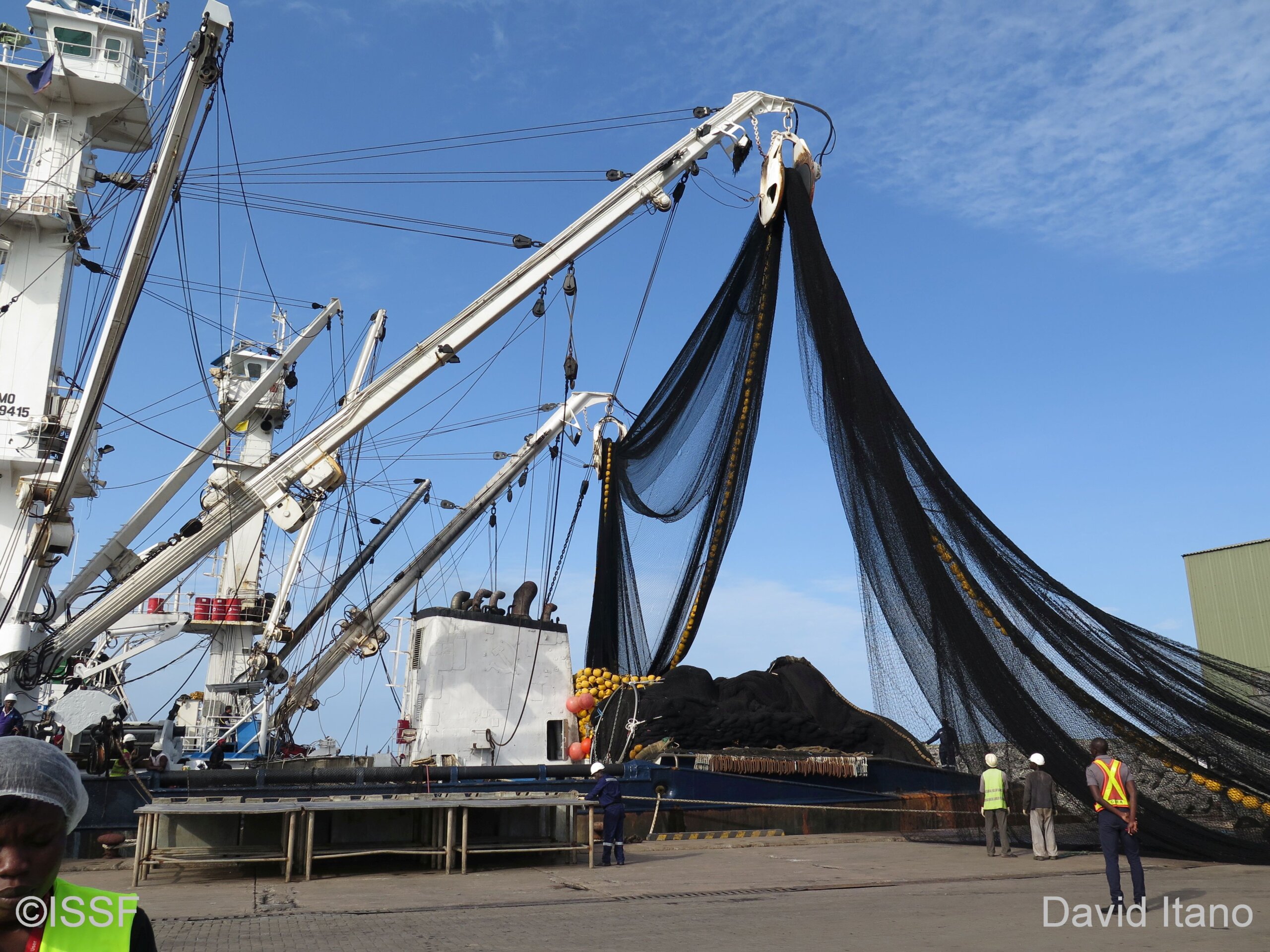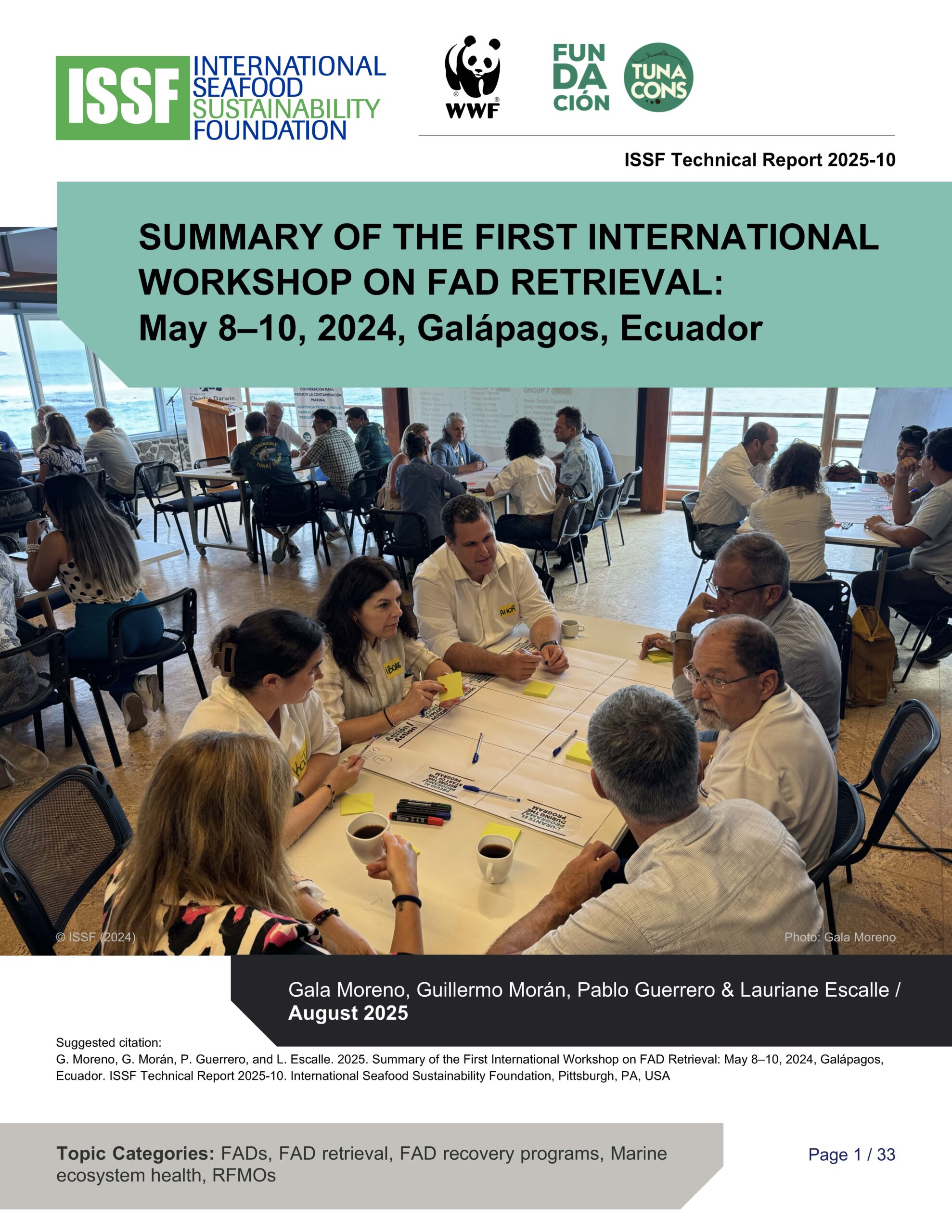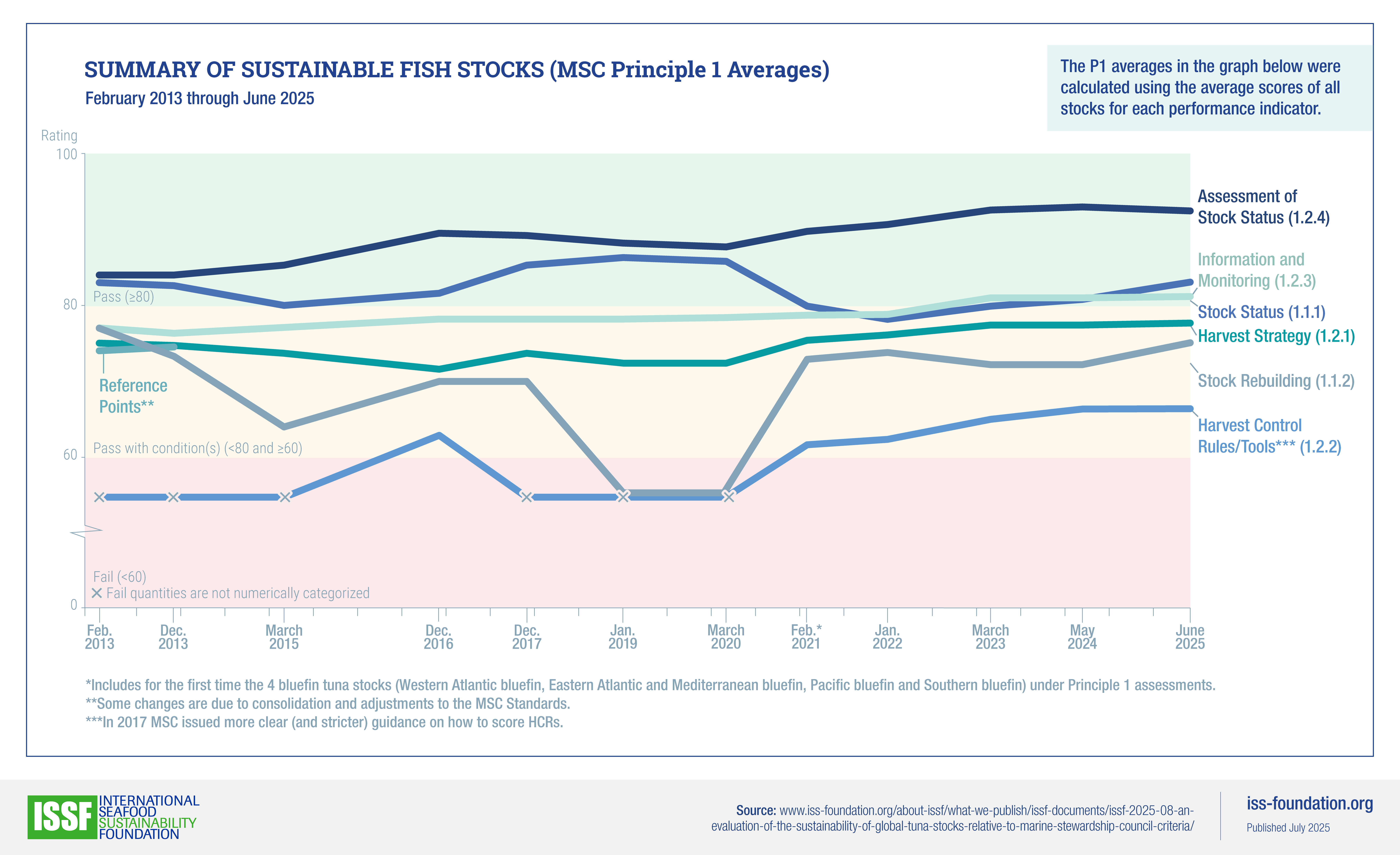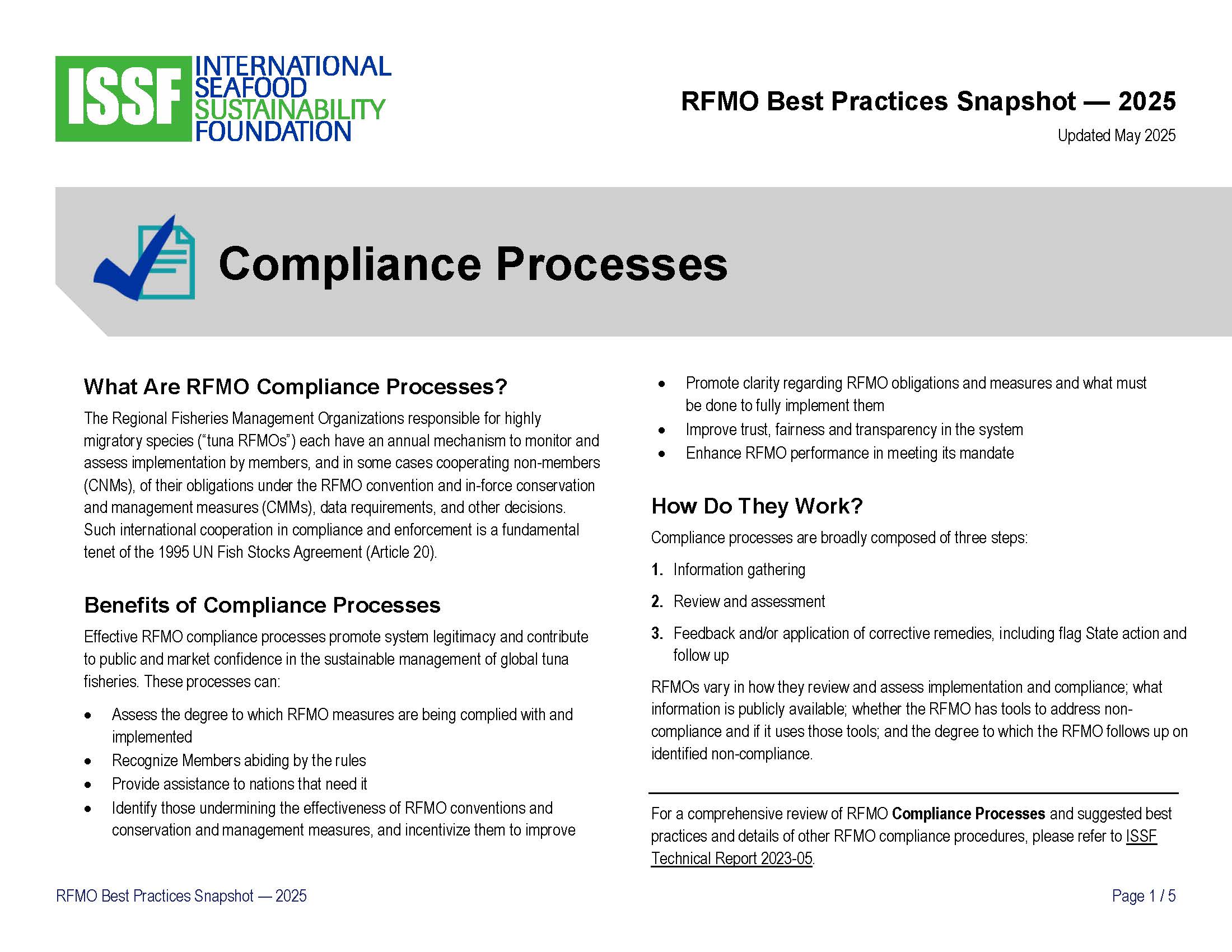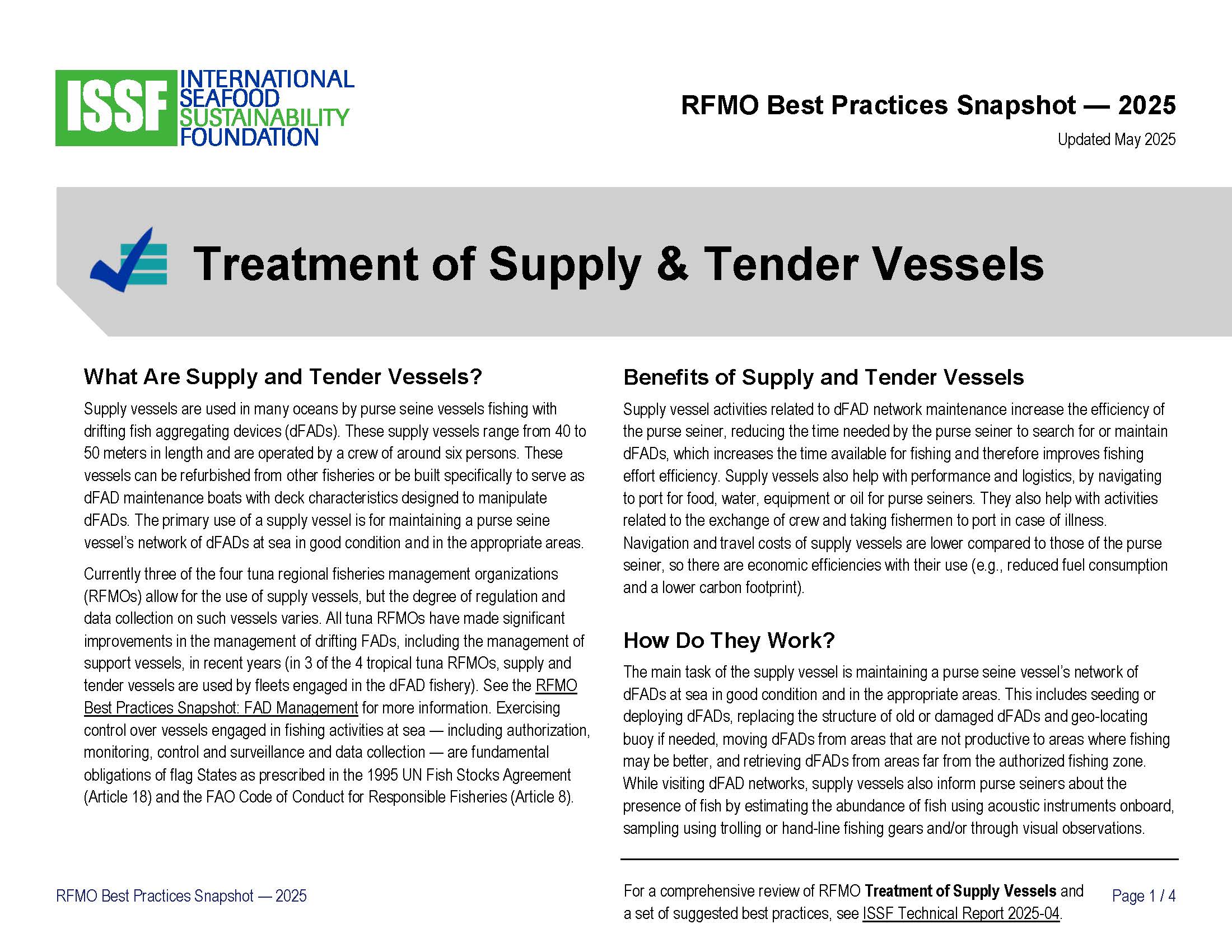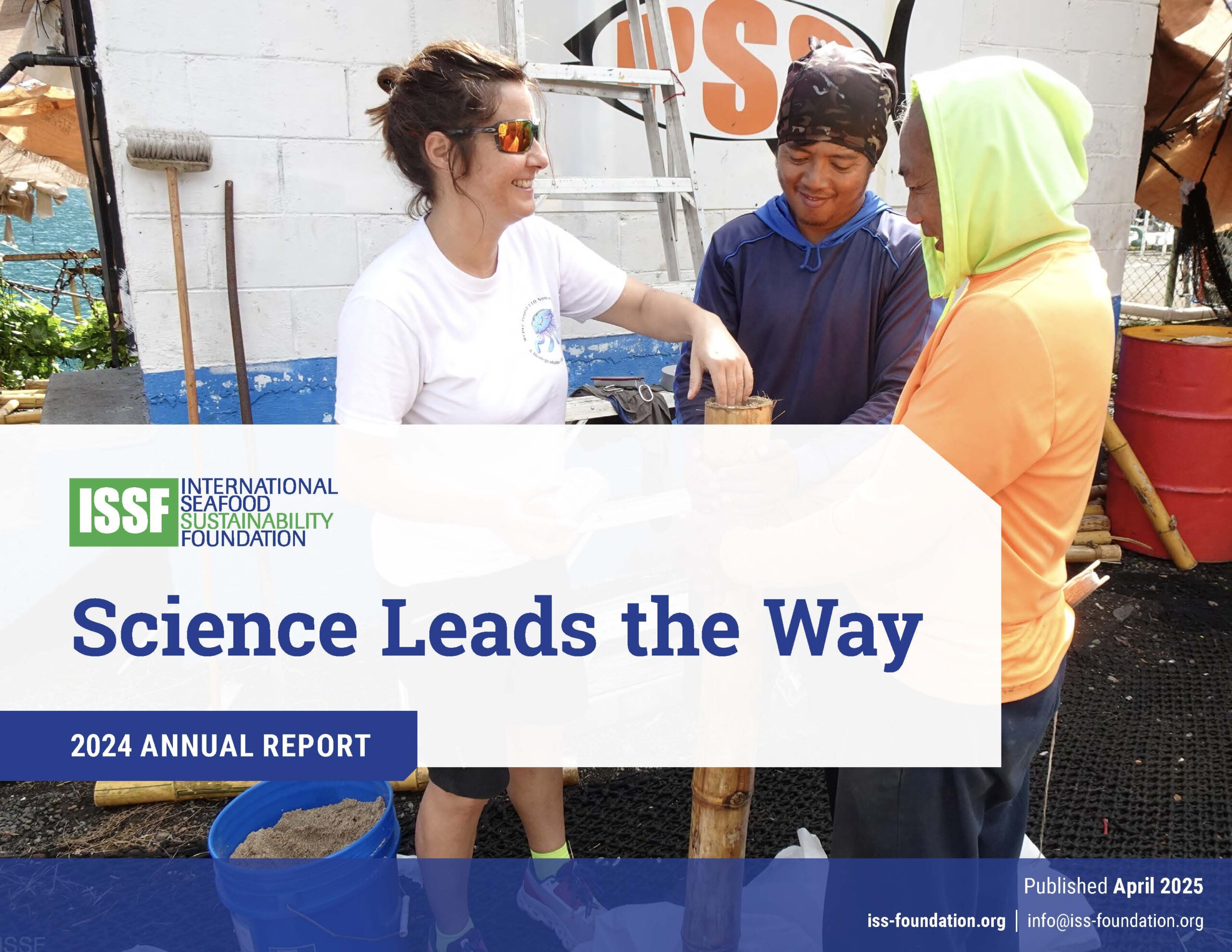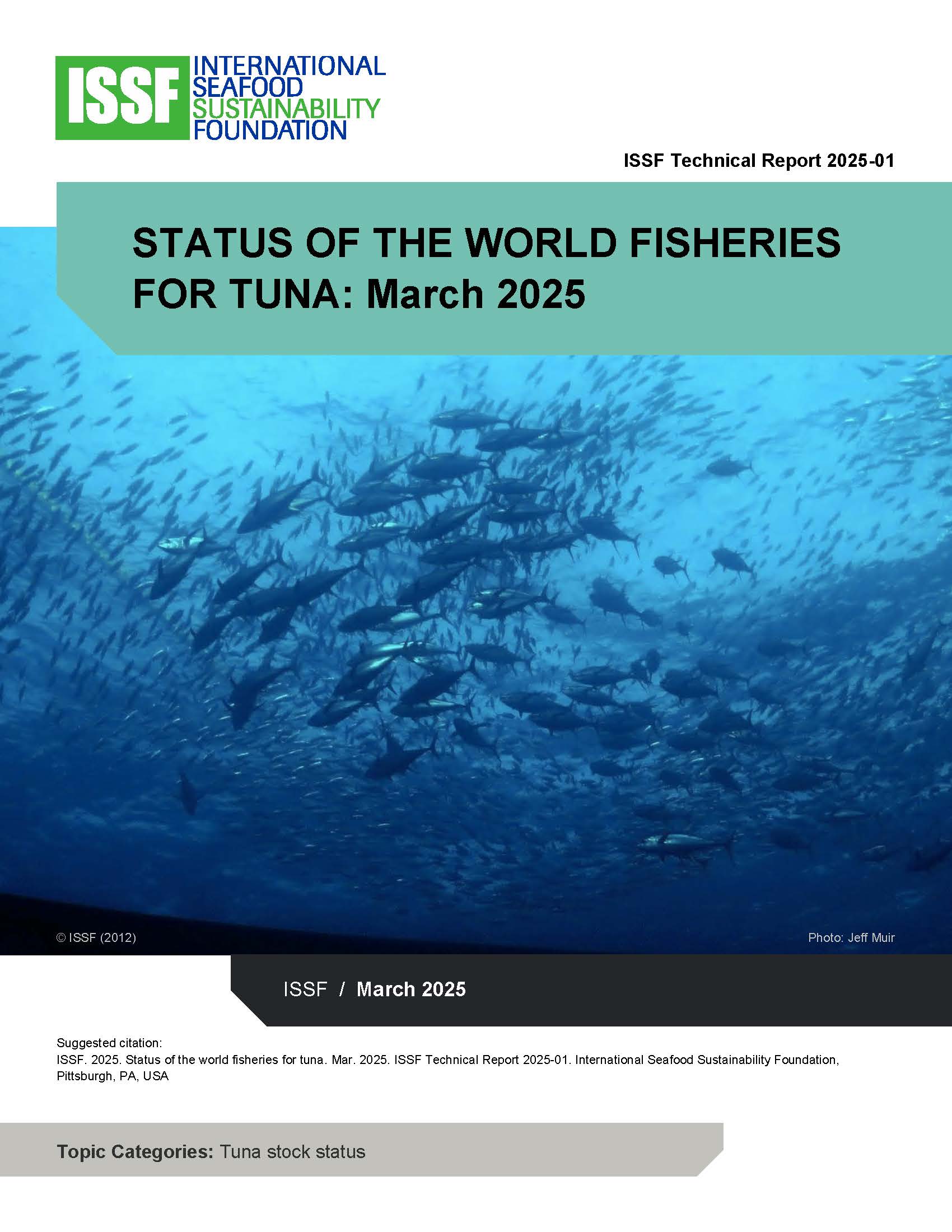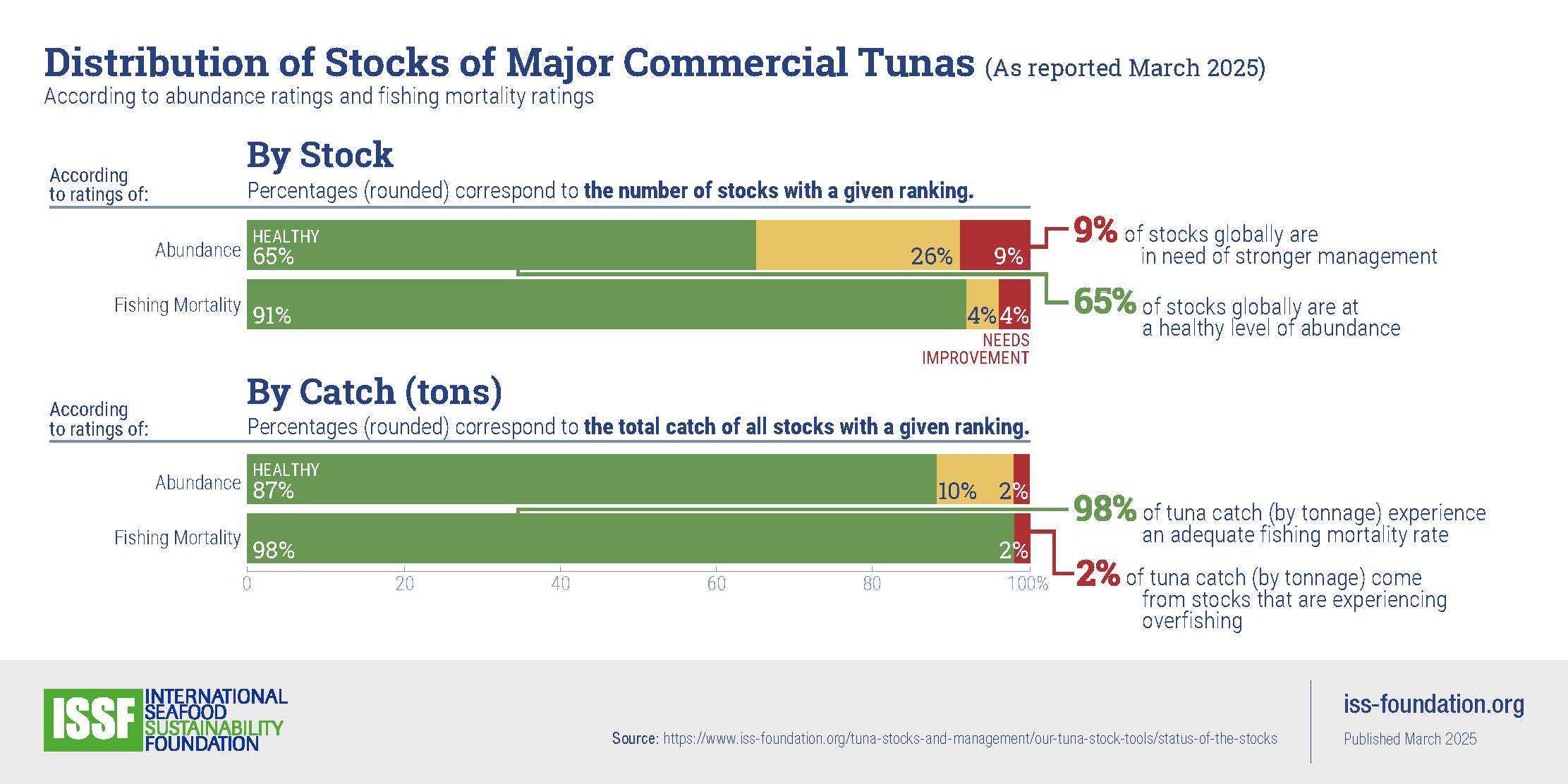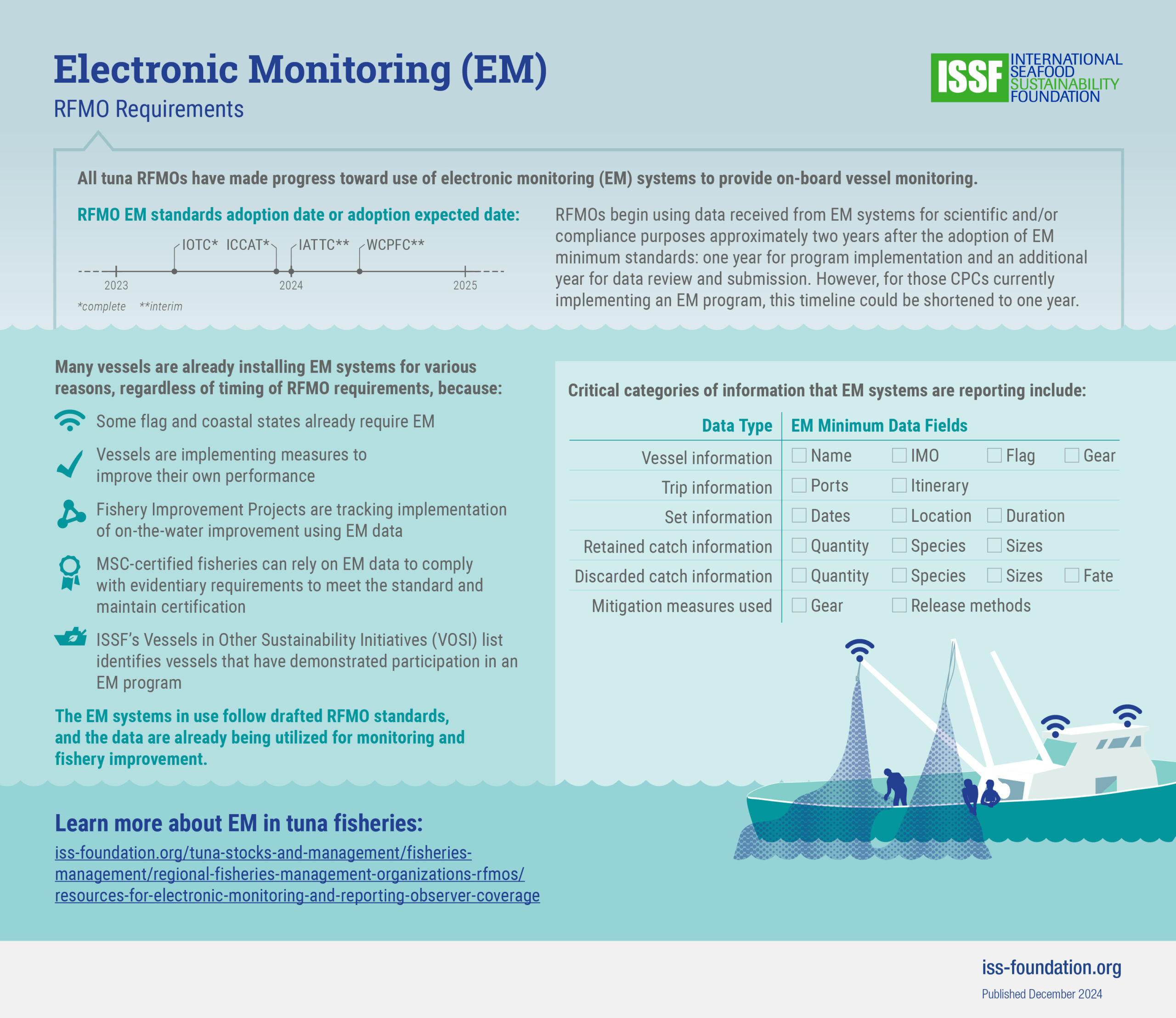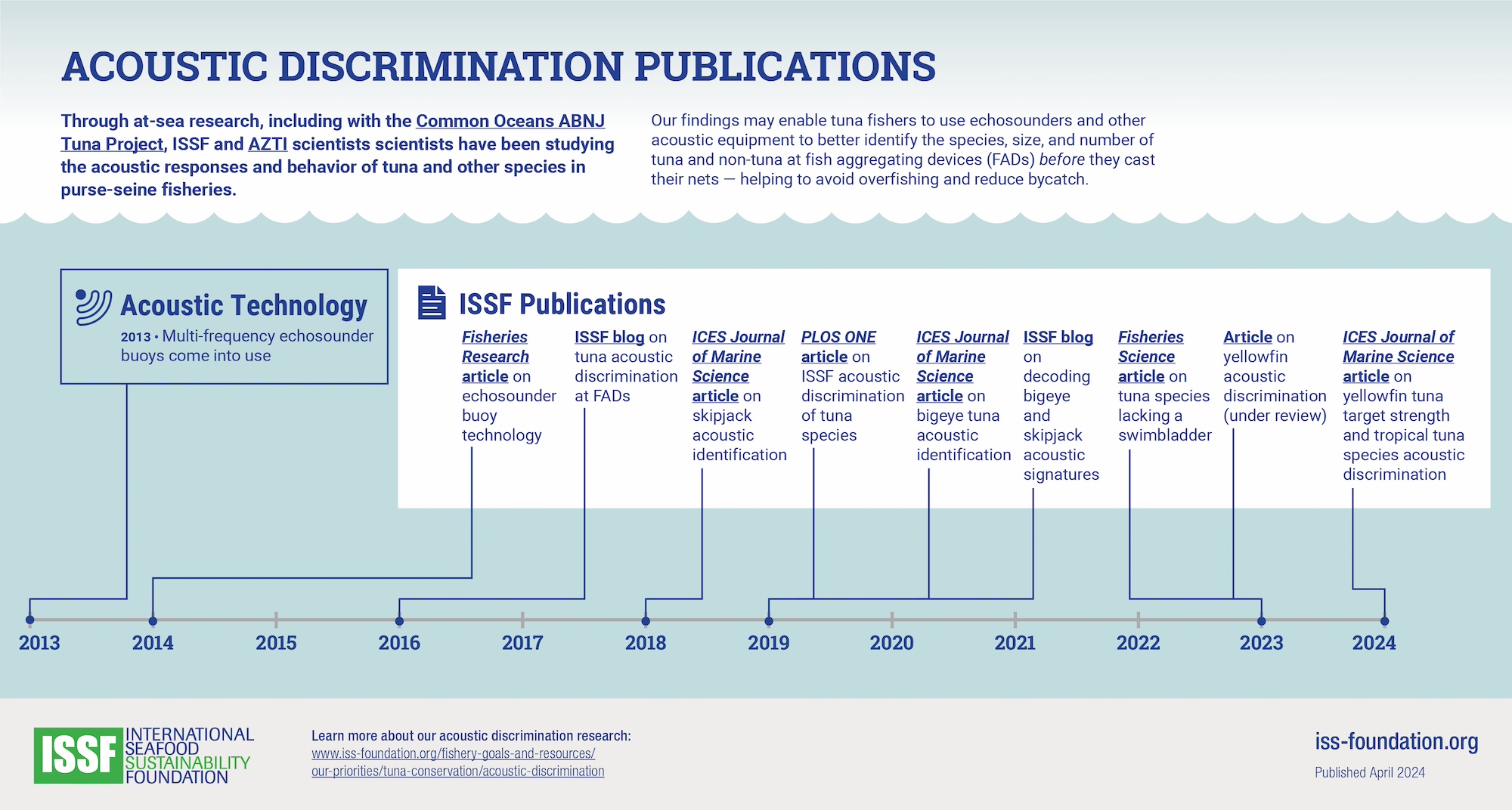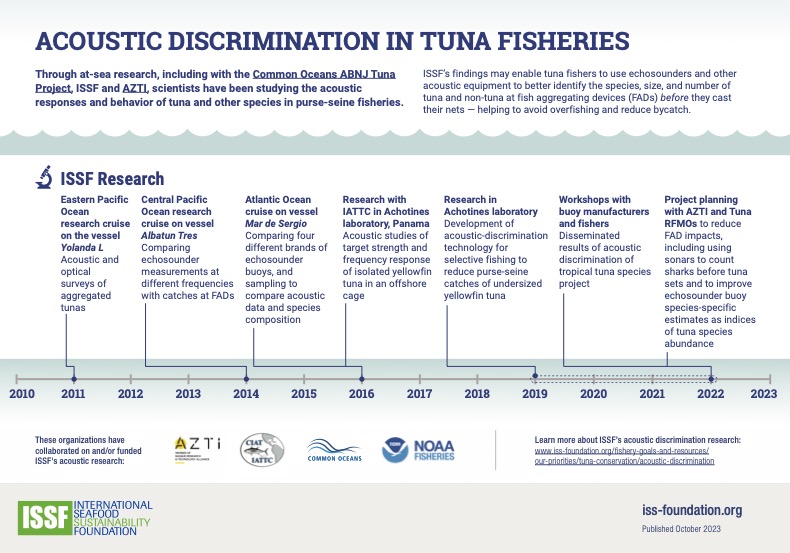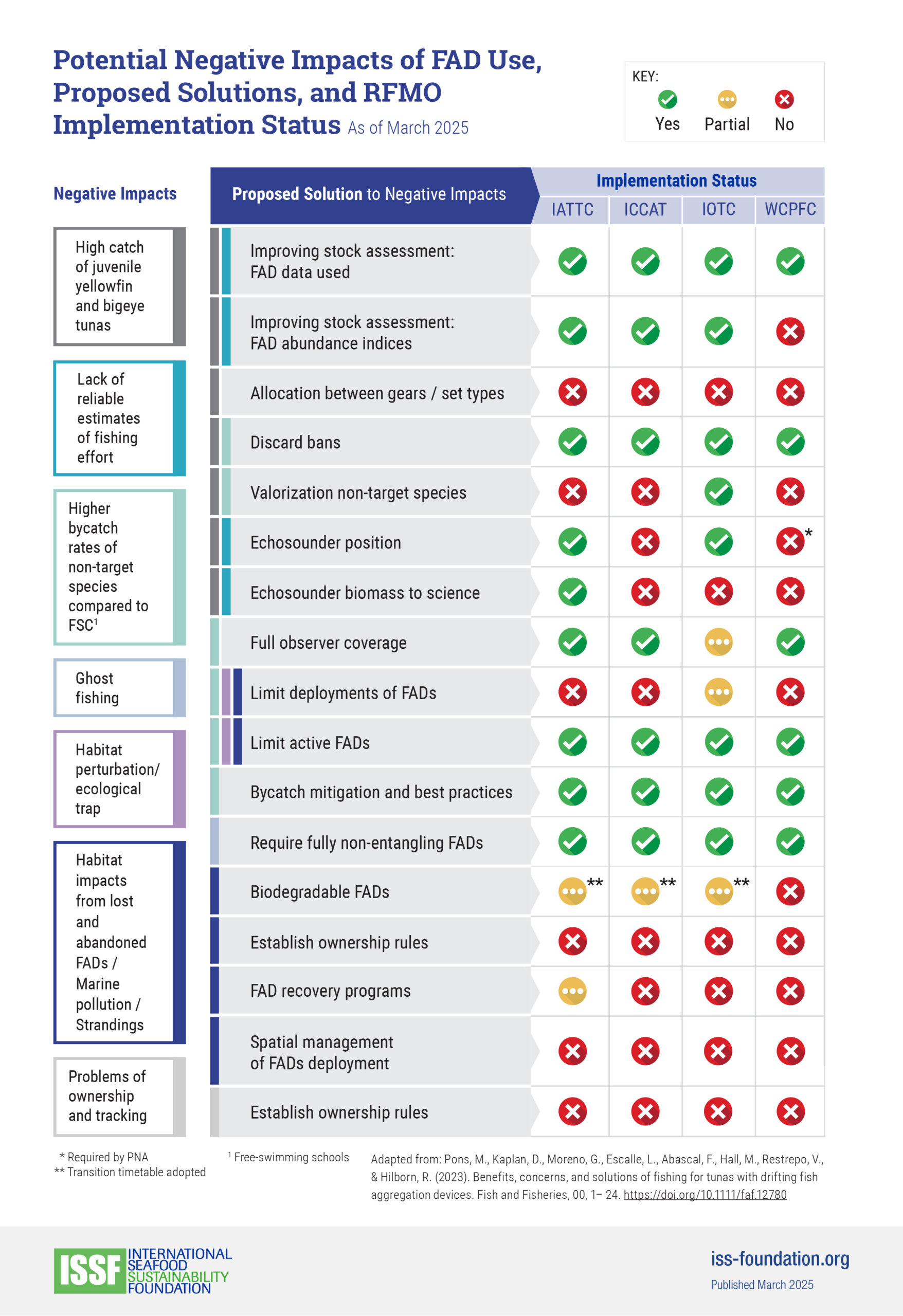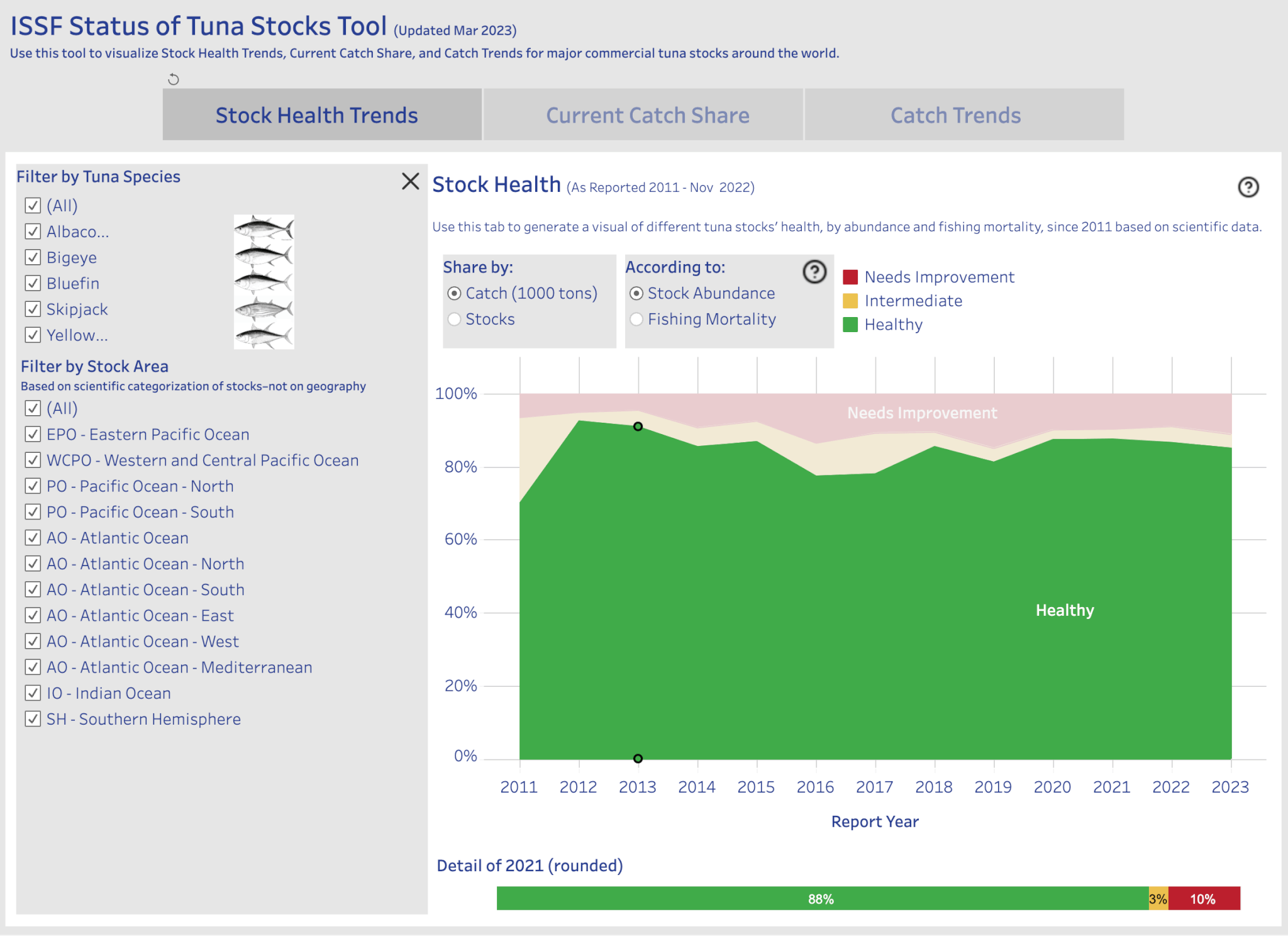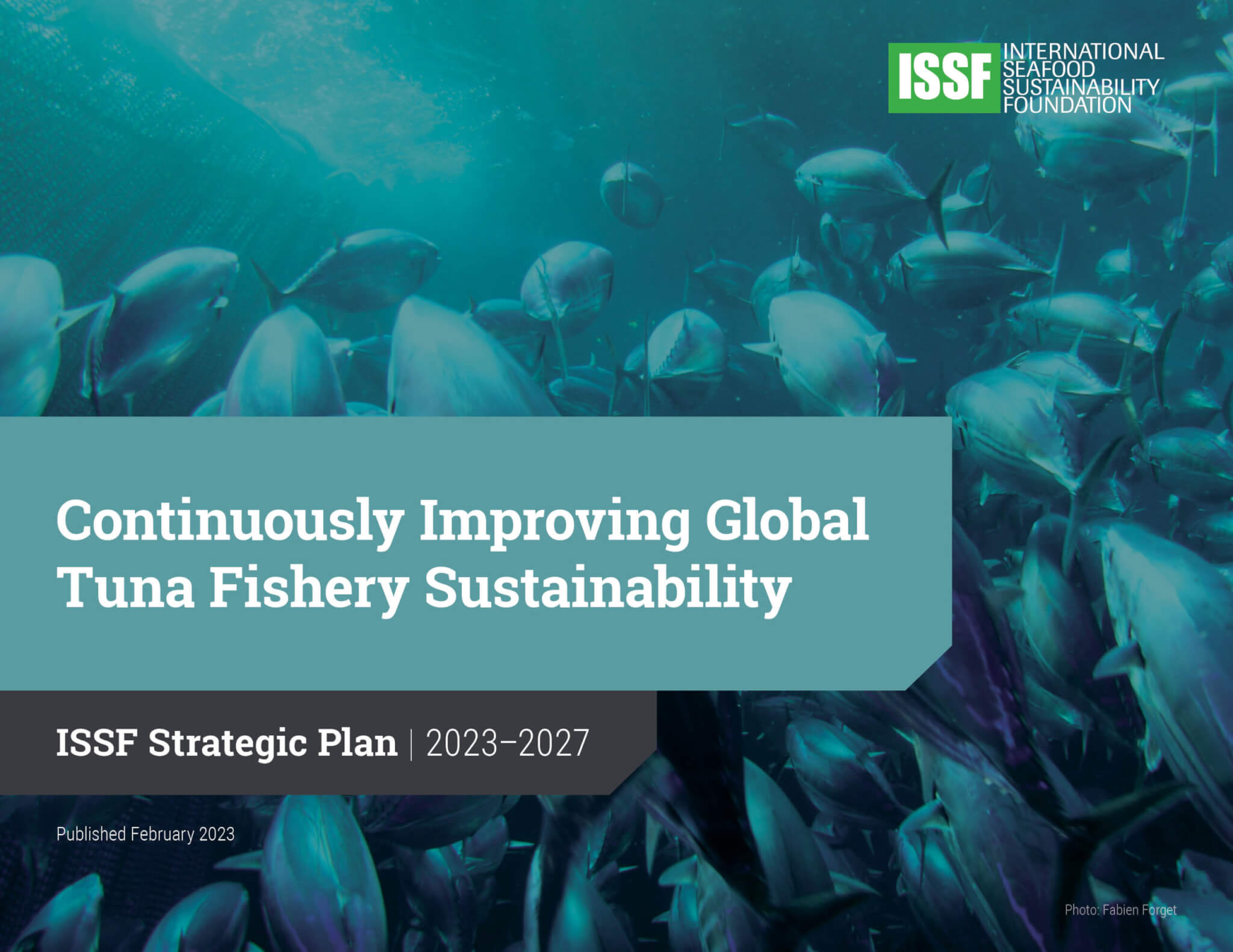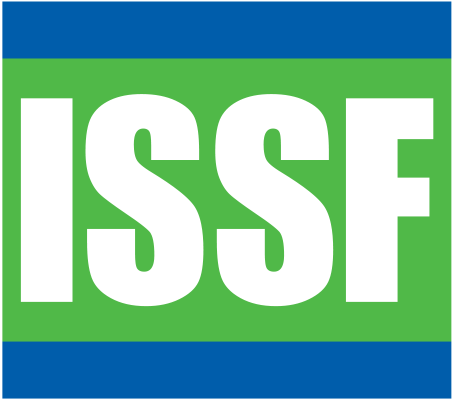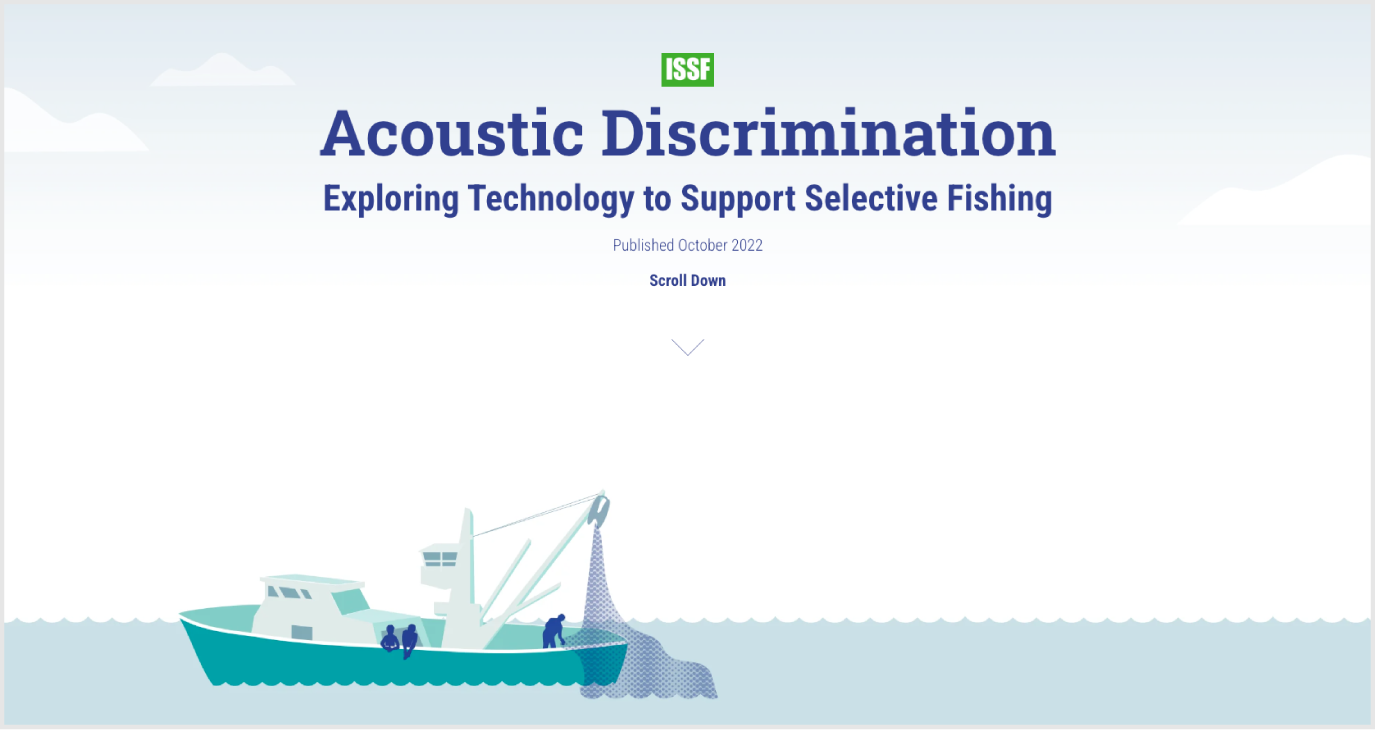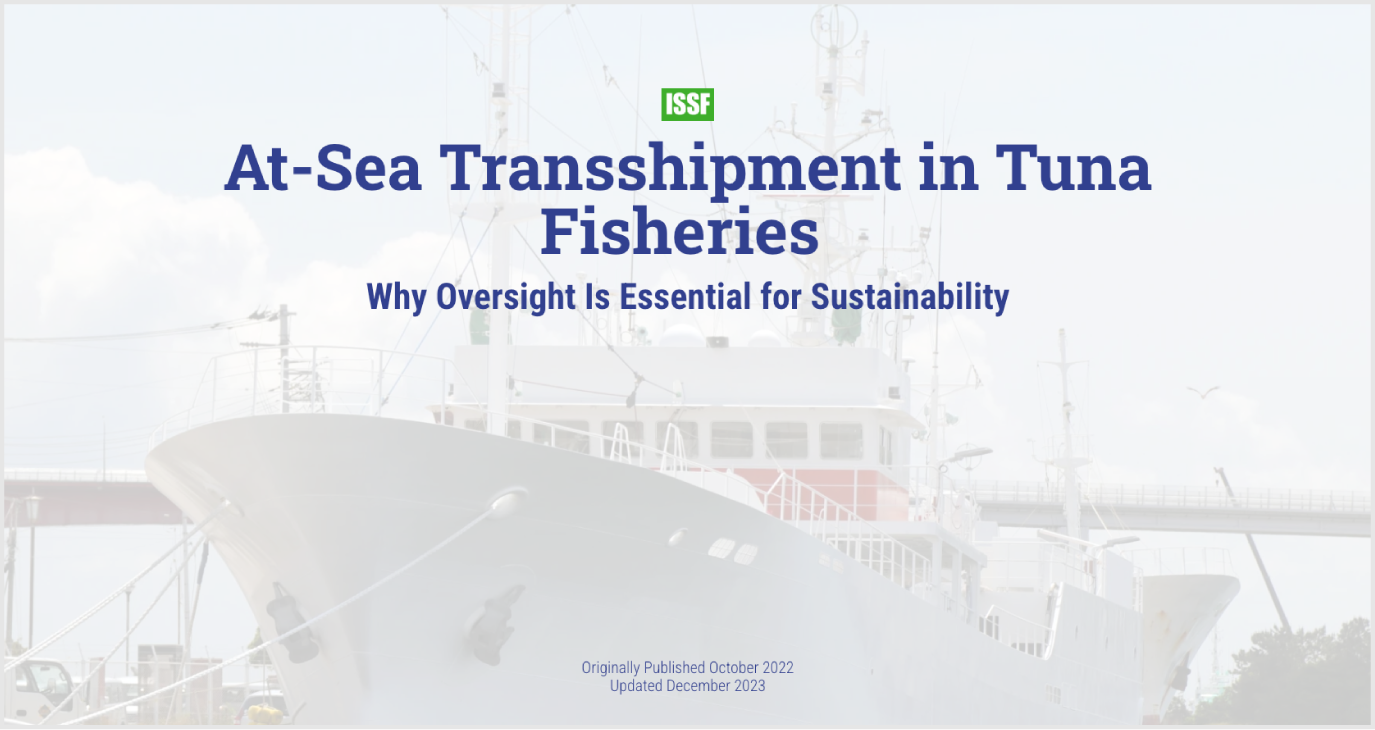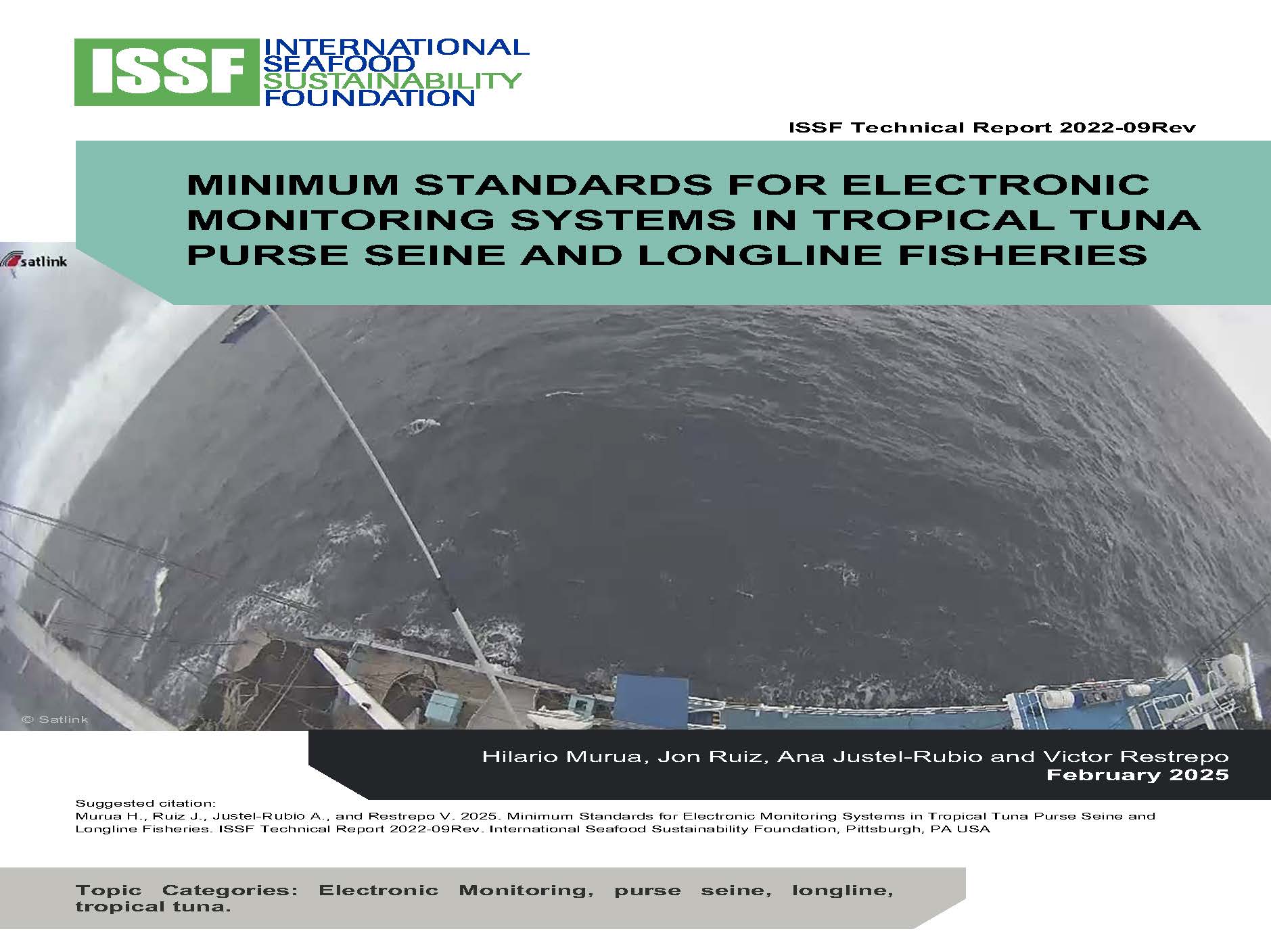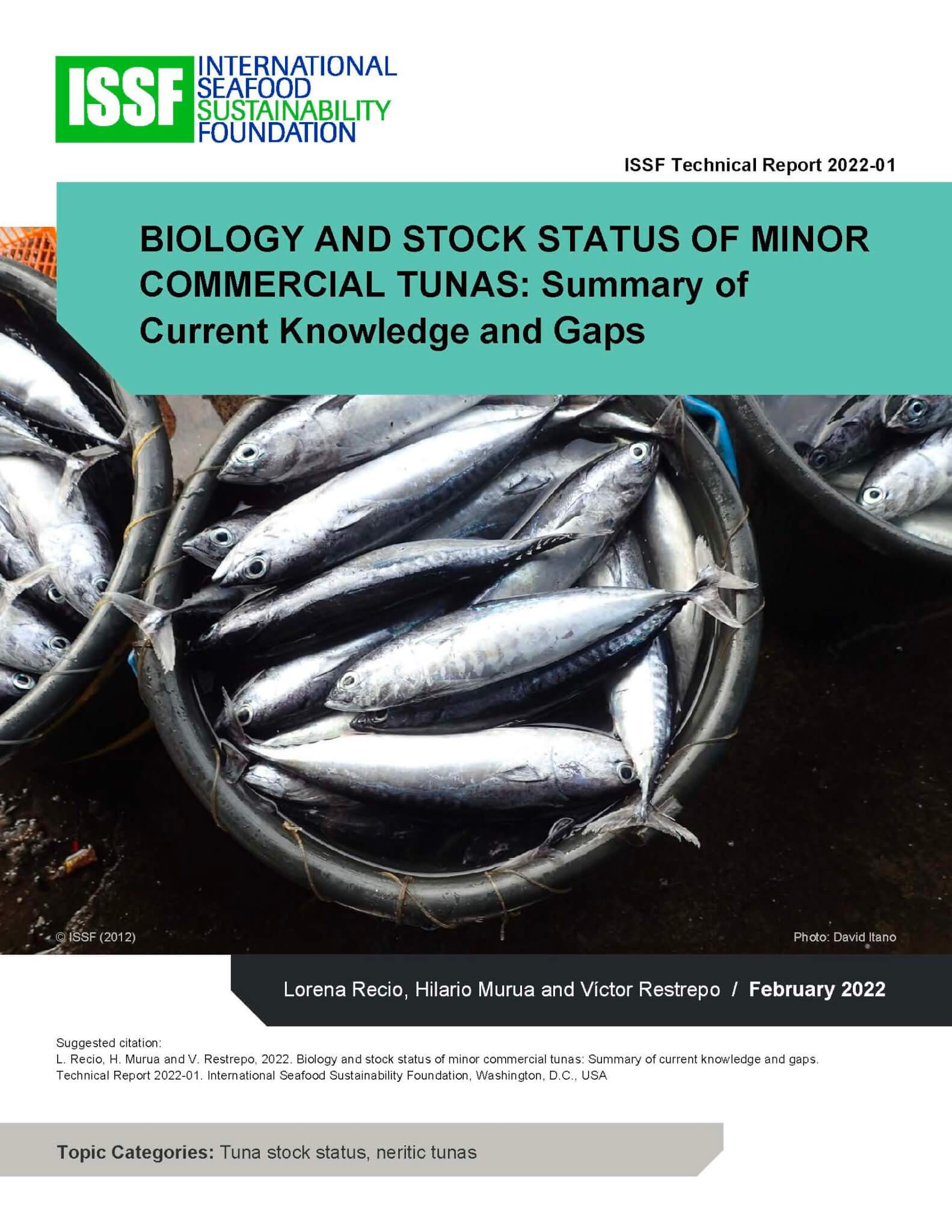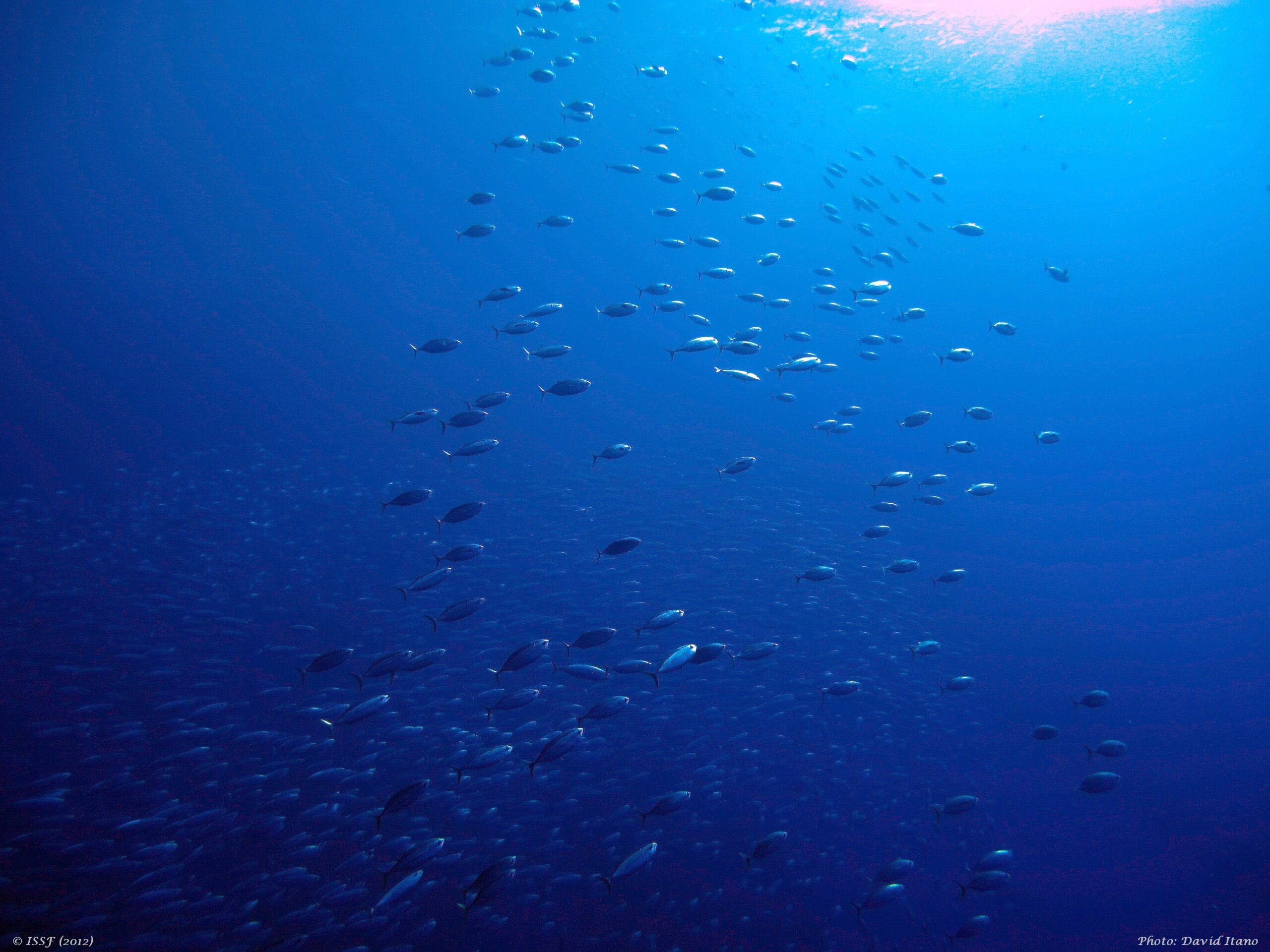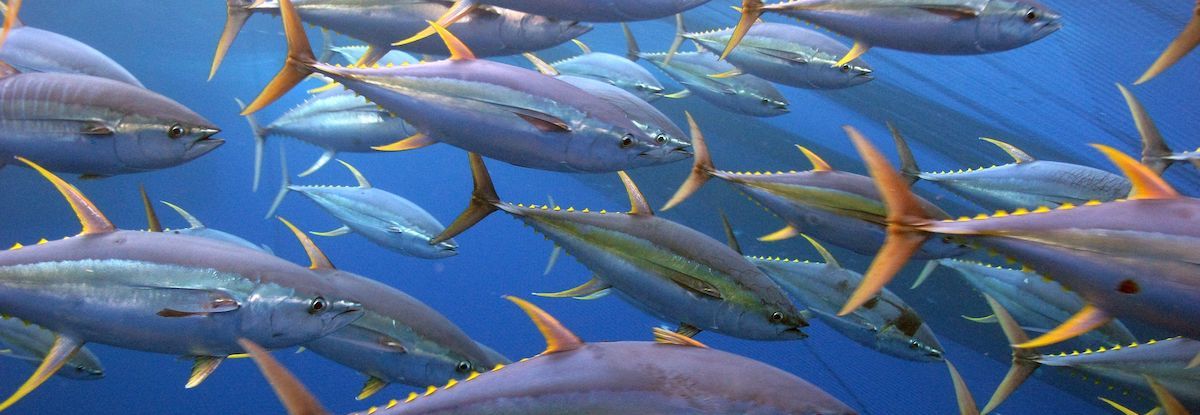
Tuna Conservation
ISSF’s research and advocacy work – from producing an annual Status of the Stocks report to attending Regional Fisheries Management Organization (RFMO) meetings – aims to ensure effective, science-based conservation and management of tuna resources globally.
Tuna species — especially skipjack, yellowfin, bigeye and albacore — are a valuable food source for millions of people and fundamental to the global economy. In 2023, the catch of major commercial tuna stocks totaled about 5.2 million tonnes. Tuna also are integral to the health of the greater marine ecosystem.
We provide data, best-practices recommendations, and other expertise to help vessels, seafood companies, non-governmental organizations (NGOs), RFMOs and government agencies keep tuna stocks at sustainable levels.

Acoustic Discrimination
Since 2011, ISSF scientists have researched how acoustic discrimination technology can help tuna fishers to fish more selectively.
For instance, echosounders can be used to identify the acoustic signatures of different tuna species at fish aggregating devices (FADs). Before they make a set, fishers can better target tuna species whose stocks are at healthy levels — reducing both overfishing and bycatch of non-target tuna and other marine species.
Read an update on ISSF’s acoustic discrimination research in our 2024 annual report, Science Leads the Way.
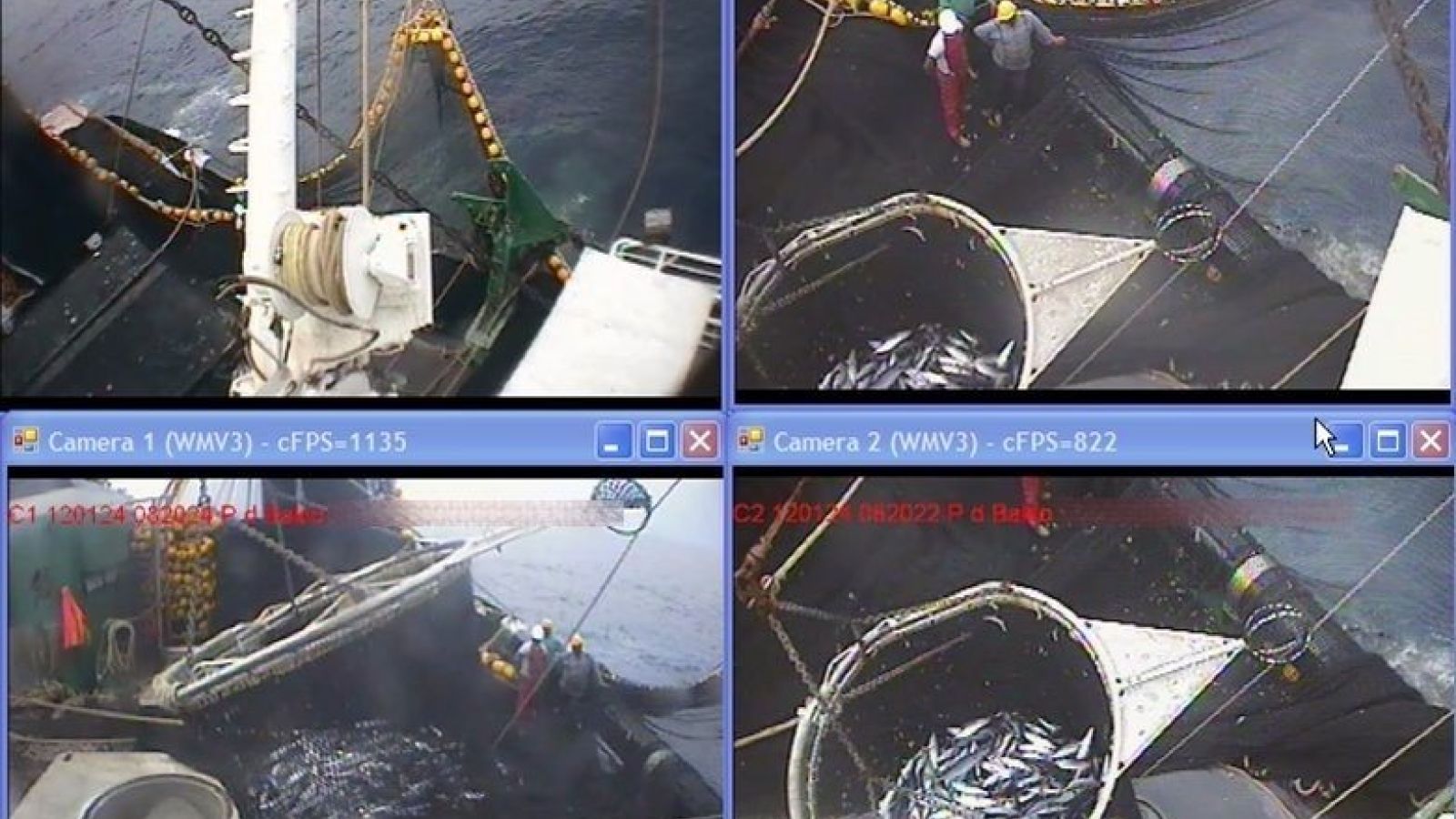
Electronic Monitoring
Electronic monitoring systems (EMS) — which use cameras, sensors, and other technology — can help to track a vessel’s catch, bycatch, transshipment, and other at-sea activities, and are tools for assessing vessel compliance with fishing regulations.
ISSF publishes reports on minimum standards for EMS in purse-seine and longline fisheries, which are listed on our page of resources to assist RFMOs on electronic monitoring and reporting (EM/ER) and observer coverage.
We also track RFMO progress in requiring EM/ER best practices.
Tuna Stock Status
Globally, as of our March 2025 report, 65% of the 23 major commercial tuna stocks are at healthy levels of abundance, 26% are at an intermediate level, and 9% are overfished.
OUR CONTRIBUTIONS
Tuna Stock Assessments
Understanding the health of the tuna stocks on which the world relies is a critical first step to promoting tuna conservation globally.
Each year, ISSF publishes the “Status of the Stocks” report, which provides a comprehensive analysis of tuna stocks by species. This report, reviewed by the Scientific Advisory Committee, informs our research and advocacy priorities.
We also publish a report that uses the Marine Stewardship Council (MSC) scoring system to evaluate 23 stocks of tropical and temperate tunas throughout the world. It also evaluates the management systems of the RFMOs associated with these stocks.
Conservation Measures
ISSF establishes tuna conservation measures for participating seafood companies and vessels on our ProActive Vessel Register and audits their compliance with the measures every year. Download an infographic of current ISSF conservation measures.
Our research findings inform our conservation measures. For example, the overfishing of a particular tuna species may spur at-sea research to test technical methods to manage the catch of the species. Then, as the health of the stock demands, we may advocate for specific conservation measures for a particular tuna species at the RFMO level.
Research, Workshops & Publications
We also study catch limits, fishing mortality, and other factors to prevent overfishing, sharing our findings with fisheries managers and tuna fishers of all gear types.
In addition to hosting in-person workshops with tuna skippers, we offer video workshops, guidebooks and species identification guides, and other resources for sustainable fishing for vessel owners and crew.
Fishers, RFMOs, and other fishing policymakers can consult our scientific reports and best-practices reports on a range of conservation topics, from MSC fishery certification to illegal fishing. Our scientists also publish peer-reviewed articles in leading journals.
Precautionary Approach Advocacy
RFMOs must ensure the long-term sustainability of tuna stocks in their regions, and ISSF advocates that they apply the precautionary approach.
In modern fisheries management, that means using harvest strategies, which includes setting appropriate target and limit reference points and adopting harvest control rules (HCRs).
While all tuna RFMOs have made progress to develop harvest strategies for the stocks they manage, none have fully implemented them except for one stock. ISSF’s science and advocacy experts urge all tuna RFMOs to adopt stock-specific limit and target reference points and HCRs.
RELATED RESOURCES

Annual Report
Science Leads the Way explores ISSF’s research, outreach, and other achievements in 2024.
Peer-Reviewed Articles
See a list of peer-reviewed articles co-authored by our staff, Scientific Advisory Committee members, or other scientists whose projects were partially or fully funded by ISSF.
Sustainable Fishing Guides
Visit the ISSF Guidebooks site for online and downloadable guides for tuna skippers and observers in purse-seine, pole-and-line, and longline fisheries who want to fish more sustainably.
Stock Status Tool
Use our interactive data-visualization tool to create and then download or share graphics on tuna stock status.
You can visualize data on 23 commercial tuna stocks (by species and ocean area) share of total catch, stock health trends, and catch trends over time.
TUNA NEWS
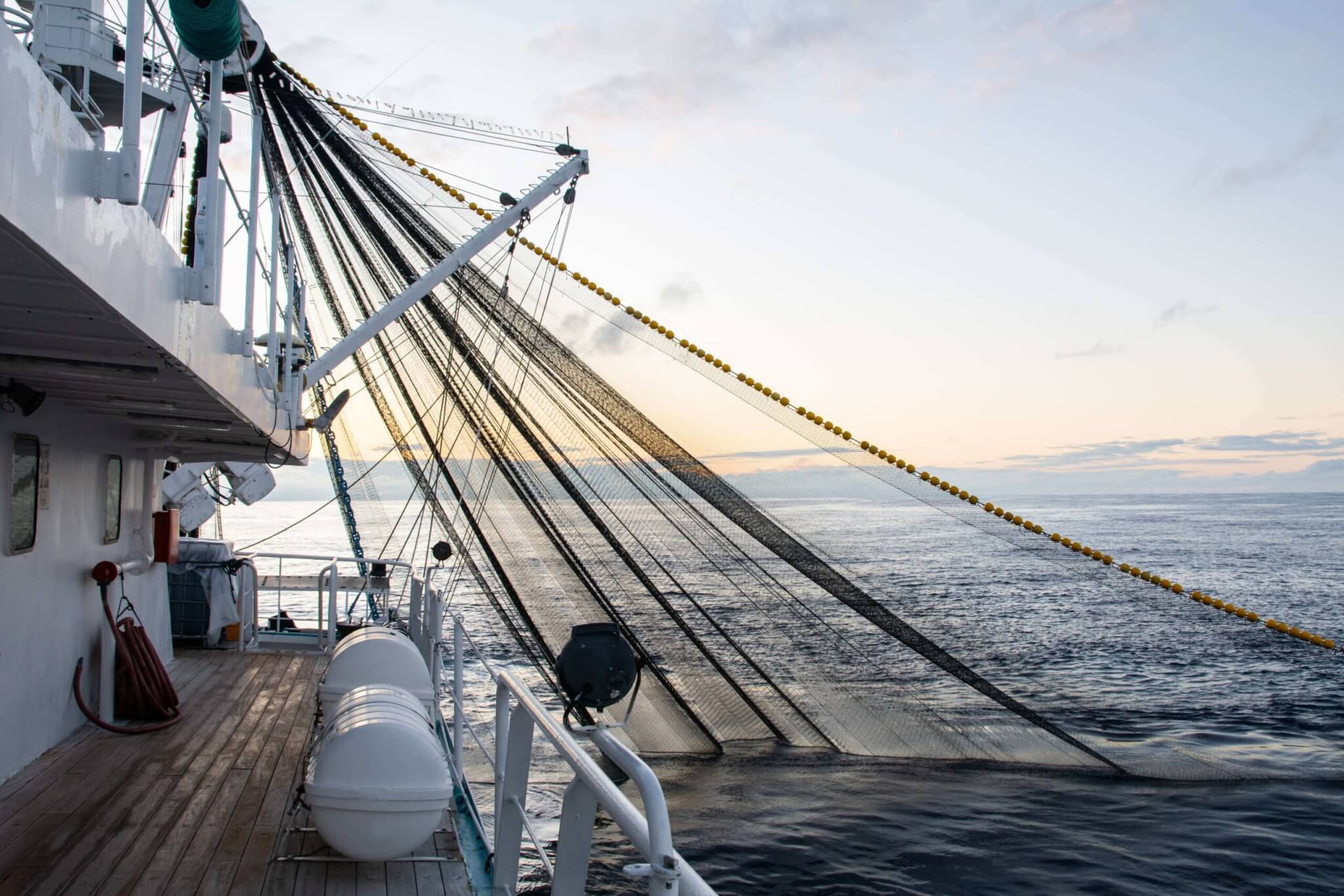
Building on Progress: ISSF Priorities for ICCAT 2025
